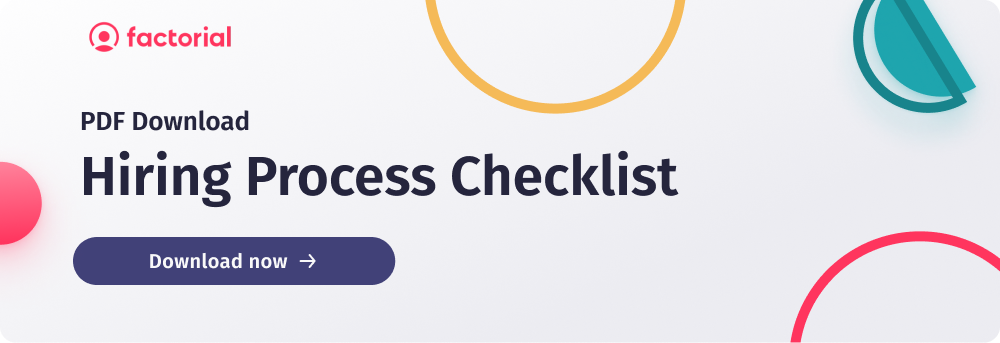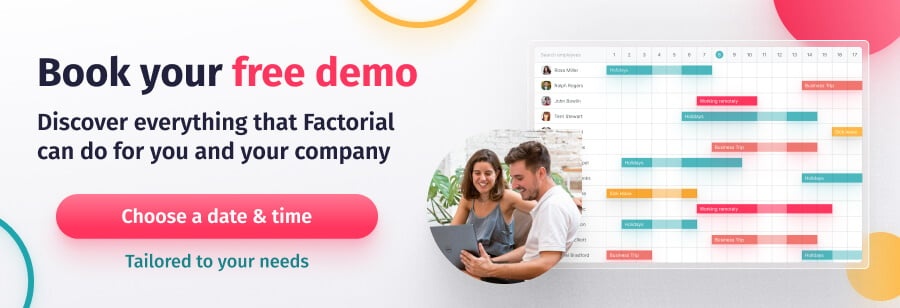The recruitment and selection process is massively vital to a company’s long-term success and growth. It’s a process that allows companies to attract a wide pool of talent while narrowing down their candidates to find the perfect match. Companies that spend more time and properly budget to find the best-suited candidates are more likely to have a lower turnover rate. Implementing an efficient recruitment strategy can be a game-changer for your organisation.
In this article, we’ll cover the key steps of the recruitment and selection process and the budget considerations to remember.
Highlights:
- Recruitment and selection is a key process of attracting candidates and evaluating your applicant pool for the best match.
- Creating a solid recruitment process improves time and cost efficiency, the quality of hires, and enhances the candidate experience.
- The hiring process includes writing a job description, advertising, filtering CVs, interviewing, assessing, and making the final decision.
What is Recruitment and Selection?
What is recruitment?
Recruitment involves identifying, attracting, and encouraging potential candidates to apply for job vacancies within an organisation. It involves creating awareness about opportunities and establishing a pool of qualified applicants.
What is selection?
Selection is the systematic process of choosing the most suitable candidates from the recruited pool through various assessments, interviews, and evaluations. It aims to match the candidates’ skills, qualifications, and attributes with the job requirements.
What is the difference between them?
The key difference lies in their focus: recruitment is about generating interest, while selection is about making informed choices to fill specific positions.
Benefits of a Streamlined Recruitment and Selection Process
Here are some of the critical advantages of making the employee recruitment process more efficient:
- Time Efficiency:
- Reduces the time taken to fill open positions, enabling faster onboarding of new employees.
- Minimises delays in decision-making and shortens the overall hiring cycle.
- Cost Savings:
- Lowers recruitment costs by minimising the time and resources spent on lengthy hiring processes.
- Reduces the need for extensive advertising and recruitment campaigns.
- Improved Quality of Hires:
- A streamlined process helps attract and quickly identify candidates most suited to the job.
- Ensures that the most qualified candidates from the applicant pool are not lost to lengthy recruitment procedures.
- Enhanced Candidate Experience:
- Provide candidates with a positive impression of the organisation, promoting a favourable employer brand. This has significant implications for hiring success, too; 72% of candidates admit that the smoothness of an interview process would impact their decision about whether or not to accept an offer.
- Reduces frustration for candidates by minimising the time between application and job offer.
- Better, Data-Driven Decision-Making:
- Allows organisations to collect and analyse data on the recruitment process, leading to continuous improvement.
- Enables the identification of trends, bottlenecks, and areas for optimisation.
- Employee Retention:
- Faster and more effective hiring contributes to a positive work environment, reducing the risk of employee turnover.
- Ensures new hires align with the organisation’s culture and values.
- Scalability:
- A streamlined process is often more scalable, making it easier for organisations to handle larger recruitment volumes when needed.

Recruitment and Selection Process Step-by-Step
There are many reasons why a company would open the process of recruitment and start hiring employees, such as:
- Fill a temporary absence within the team (maternity leave, medical leave, etc).
- Replace a staff member who has retired.
- Hire additional staff when there is an increase in work.
- Prepare for the company to start a new venture.
- Cover a newly created position.
Whatever the reason, before beginning to search for the ideal candidate, the hiring manager must first analyse the characteristics of the role, the number of vacancies they will be covering, the profile type of the candidate you want to find, and set out the actions required to follow through with the process. Finally, the company must calculate the cost of the entire selection and recruitment process to determine whether it is viable for them to proceed.
Hiring managers can then follow the 6 steps below for a solid recruitment and selection process. Alternatively, a recruitment team can automate the process using an Applicant Tracking System. Software of this kind filters CVs, manages adverts across multiple job boards, centralises communication with candidates, and much more.
1. Write a Job Description
A clear and detailed job description is crucial in finding the ideal candidate for the vacancy. The job description needs to be crystal clear in what the role entails. In addition, when writing the perfect job description, you should indicate the required abilities, knowledge, and experience.
2. Advertise the Offer
One of the first steps to effective hiring is to advertise the offer in the correct place. Specialised job boards may be the best place for some companies to connect with job seekers. Other companies may communicate their offer through their website or expand their reach by advertising on posters, newspapers, or radio.
In addition, social media is a great resource when advertising your job postings. According to GoHire, 79% of job seekers use social media platforms in their job search.
3. Filter CVs
Here begins the applicant tracking process! After gathering all the CVs, you must narrow the talent pool to the most promising candidates. Following this, it’s time to screen candidates who fit the role’s requirements.
4. Conduct Personal Interviews
This is the best way to know potential employees better and understand whether they would be a good match for the company. Also, phone interviews are beneficial for recruiters to narrow down the candidates. The best recruitment practices for conducting interviews include using the STAR method and exploring not only a candidate’s experience but also their values. It’s important to ensure they have the necessary experience, knowledge, and are a good cultural fit.
5. Carry Out a Test
You can choose to carry out tests (i.e. psychological or role-specific tests) to ensure the candidates meet the requirements of the position. For instance, you may have candidates answer a series of questions that help the recruiter get to know them better. These tests may involve an analysis of a candidate’s problem-solving abilities.
Additionally, you can use intuitive tools like Pipplet to assess candidates’ language proficiency, both spoken and written. Pipplet’s tests are available in 40+ languages, including English, Spanish, French, German, Dutch, and Brazilian Portuguese, making it an excellent choice for multicultural companies.
6. Assess and Select Top Candidates
Making your decision is the final stage of the process. Assessing the results of the interviews and tests of qualified candidates allows you to narrow your search to shortlisted candidates. From this, you can find the ideal candidate to fill the job role. To increase your chances of choosing the right candidate, could you gather the opinions of multiple stakeholders, including the future line manager? You will also need to reject candidates during this step.

Budgeting for Recruitment and Selection
How to Budget for Recruitment and Selection
To accurately budget the selection process, it’s essential to understand the difference between direct and indirect costs.
1. Direct costs: These are directly associated with the recruitment process. Some of these may include:
- Advertising the offer
- Materials required by the employees running candidate tests
- The test itself
- Interview space
- Food and accommodation (if applicable for hires)
- The salary cost of the employee.
2. Indirect costs – The indirect costs are shared expenses between other departments of the company, which are not included in the budget as a whole. Instead, the costs are divided into the budgets of the various departments they serve.
How to Calculate Recruitment Cost
The total cost of recruiting staff = direct costs + indirect costs.
Let’s look at an example to display this process. Let’s assume that our direct costs are £150 to advertise the job posting, £180 for the materials for the candidates, £500 to rent the space, £300 for housing and food, £80 for transportation and gas, and £300 for the salary of the contractors – let’s say they each work 10 hours at £30 per hour.
On the other hand, let’s consider that our indirect costs are £100 for materials and administration, £40 for the telephone bill, and £40 for secretarial services – let’s say they work 5 hours at £8 per hour.
Direct costs = £1,510
Indirect costs = £180
In total, the recruitment cost is £1,690.
What to do When the Budget is Limited
Adjustments can be made when the total recruitment cost is higher than the allocated budget. You can consider reducing some of the expenses involved in the process, whether direct or indirect. For example, you can choose video interviewing rather than renting a space and conducting in-person interviews. Another alternative is to reduce the number of external candidates and look at hiring internally.
Effective Recruitment Strategies To Attract Top Talent
Data shows that 27% of candidates seek caring work environments, while more than 1 in 5 want skills training and development. Other factors include salary protection, flexible work arrangements, and financial compensation beyond the base salary. To attract talent, incorporate these effective recruitment strategies into your hiring process, meet these candidate expectations, and differentiate yourself from your competitors. Before you know it, you’ll be hiring great employees across your organisation!
1) Develop a Strong Employer Brand
When it comes to attracting job candidates, your employer brand is everything. It’s the face of your company and the key to building a loyal, dedicated workforce. So how do you create a brand that stands out from the rest? Here are a few tips to your recruiting team can use to get started.
Define your company culture
Your company culture sets you apart from the competition. The unique blend of values, attitudes, and behaviours makes your company what it is. So take the time to define your culture and ensure everyone in the company understands and embodies it.
Showcase your mission and vision
Job seekers want to work for a company with a purpose, so could you explain your mission and vision and show how you achieve them? This will help attract candidates who share your values and are excited about your goals.
Get your employees involved
Your team members are your biggest advocates, so get them involved in building your employer brand. Encourage them to share their experiences on social media and showcase their success stories in your recruitment materials. This will help build a sense of community and attract like-minded candidates.
2) Devise an Employee Referral Programme
Employee referral programmes are an effective way to attract qualified candidates and reduce the cost and time spent on a recruiting strategy, incentivising existing employees to refer qualified candidates to a job opening. They can lead to higher-quality hires who fit well with the organisation.
Here are some tips for creating an effective employee referral programme:
- Define clear programme goals and rewards: Rewards can be monetary compensation, extra vacation days, or other incentives.
- Promote the programme effectively: Use various communication channels such as email, social media, and company intranet to promote the programme and encourage employees to participate.
- Make the process simple and user-friendly: Create an online referral portal where employees can easily submit referrals for a job opening and provide updates on the status of their referrals.
3) Offer Competitive Compensation and Benefits
Attracting potential candidates often requires offering competitive compensation and benefits packages and clearly expressing these in job descriptions and throughout your hiring process. Here is what you need to know:
- Understand market rates: Conducting salary surveys and analysing industry data can help you benchmark your compensation and benefits against your competitors.
- Offer comprehensive benefits packages: Consider offering unique benefits, such as flexible work arrangements, tuition reimbursement, or wellness programmes, to help set your company apart. These benefits could also be medical, dental, or life insurance packages and should be made aware of on the jobs posted.
- Provide equity and stock options: These can be powerful incentives for potential candidates, allowing team members to share the company’s success and feel invested in its growth.
4) Use Data to Improve Job Posts and the Hiring Process
Recruiting any job seekers from the vast talent pool you’re faced with is a complex process that requires a lot of time and resources. Still, there is data that companies can use to streamline their recruitment efforts and improve their chances of hiring suitable candidates. Here are some ways a talent acquisition team can use data to improve their hiring process along with their recruitment strategy:
- Tracking recruitment metrics: Measuring key recruitment metrics, such as time to hire, cost per hire, and quality of hire, to identify areas for improvement and optimise the recruitment processes.
- Using recruitment analytics: Using data or recruiting tools such as an applicant tracking system (ATS), you can gain insights into candidate profiling and recruitment marketing, which helps the hiring team when improving job postings, the interview process, identifying bottlenecks, and optimise the overall hiring strategy.
Recruitment for Startups Tips
The hiring process is fairly methodical: discover your hiring needs and what each role requires, source your candidates, and go through a selection process to find the right fit. The final decision is based on the candidate’s qualifications, interview performance, and alignment with the startup’s values and goals. Once a candidate is selected, onboarding begins, ensuring a smooth transition into their new role and the organisation.
Hiring the right talent is essential for the success of any business, but startups face distinct challenges that set their hiring processes apart from those of SMEs or large corporations. Startups often operate in fast-paced environments and require agility. So to make things easier, a successful recruiting strategy should be streamlined, efficient, and adaptable. On top of that, cultural fit is crucial for startups, as each team member significantly contributes to shaping the company’s culture.
Hiring processes and procedures for startups should consider that the company may not be well known. Here are some of the most effective recruitment for startups tips:
1) Leverage Your Network
One of the most powerful ways to find great candidates is through your existing network. Contact your employees, investors, advisors, and industry connections for referrals. As trusted sources recommend, internal referrals, or an established employee referral program, often result in high-quality hires.
2) Tap into Online Platforms and Job Boards
Online platforms and job boards provide access to a wide pool of talent actively seeking opportunities in the startup ecosystem. Popular platforms like LinkedIn and AngelList are excellent resources for finding qualified candidates and niche job boards targeting specialised workers. Optimise your job postings and company profile to attract the right talent.
3) Attend Networking Events, Job Fairs, and Meetups
Networking events, conferences, and industry-specific meetups are great opportunities to connect with professionals in your field. Engage in meaningful conversations, showcase your startup’s vision, and build relationships with potential candidates who share your passion and enthusiasm.
Internal vs External Recruitment
When you have open positions that you need to fill, how do you go about recruiting for them? There are two different strategies that you’ll use: internal recruitment and external recruitment. How you use them might be different to another company.
Hiring internal candidates makes sense because they already know the business and fit with your company culture. But rely on internal recruitment too much and you can create gaps in your workforce, generate a stagnant culture and experience resentment in your teams.
What is Internal Recruitment?
Internal recruitment prioritises hiring existing employees for new or vacant positions within a business. Some companies will only advertise roles internally, while others may advertise them externally but look to fill open positions with current employees first.
There are lots of benefits to internal recruiting that can help your company thrive, including improving retention, increasing team motivation and saving money – but lots of businesses are still falling short.
The 2021 State of Internal Mobility Report revealed 61% of people said that their company has a ‘clearly defined, well documented process established for recruiting internal employees’. While that doesn’t sound so bad, these respondents all work for some of the world’s biggest and best-known brands, so this should be much higher.
What is External Recruitment?
External recruitment is when an organisation looks to recruit candidates from outside of the company. This opens the role up to a wider pool of candidates, adds to your culture and helps bring in fresh ideas.
On the other hand, external recruitment also costs a lot more and it can have an effect on employee engagement.
FAQs about Recruitment & Selection in the Hiring Process
What is recruitment and selection in the hiring process?
Recruitment and selection in the hiring process are a series of steps companies take to find and hire the best candidate for a job vacancy. This process involves attracting and sourcing candidates, screening and selecting the best candidates, and finally, offering them the job.
How does the budget affect recruitment and selection?
The recruitment and selection process incurs a significant economic cost to the company. A well-designed recruitment and selection process requires adequate funding, and the budget affects the sourcing, screening, and selection process. A limited budget may require a more streamlined process, while a larger budget may allow for more resources, such as hiring agencies or recruitment software.
What are the recruitment and selection process steps?
The recruitment and selection process steps include creating a job description, advertising the job opening, collecting resumes and conducting initial screenings, conducting interviews, conducting tests or assessments, and selecting the best candidate.
How can social media be used in the recruitment and selection process?
Social media can be used to understand a candidate’s personality and interests better. Employers can use social media to screen potential candidates, but it’s important not to judge them solely by their social media profiles.
What is an applicant tracking system, and how can it help streamline the recruitment process?
An applicant tracking system is a software application that helps employers manage the recruitment and selection process. It streamlines the hiring process by collecting and organising resumes, scheduling interviews, and tracking candidate progress throughout the hiring process. It can help employers save time and resources, increase efficiency, and improve candidate experience.
How does recruitment and selection work in nonprofits?
Nonprofits identify staffing needs based on programme requirements, posting jobs on their websites and diverse platforms. Volunteer engagement is integral, with volunteers often considered for paid roles. Networking is key to fostering relationships with those aligned with the organisation’s mission. Emphasising values in job descriptions attracts candidates committed to the nonprofit’s cause. Selection involves assessing not just skills but alignment with the organisation’s ethos. Nonprofits may prioritise passion and dedication, valuing individuals who resonate with the mission beyond traditional qualifications. The process ensures a team aligned with the organisation’s goals, essential for achieving social impact and community service.




